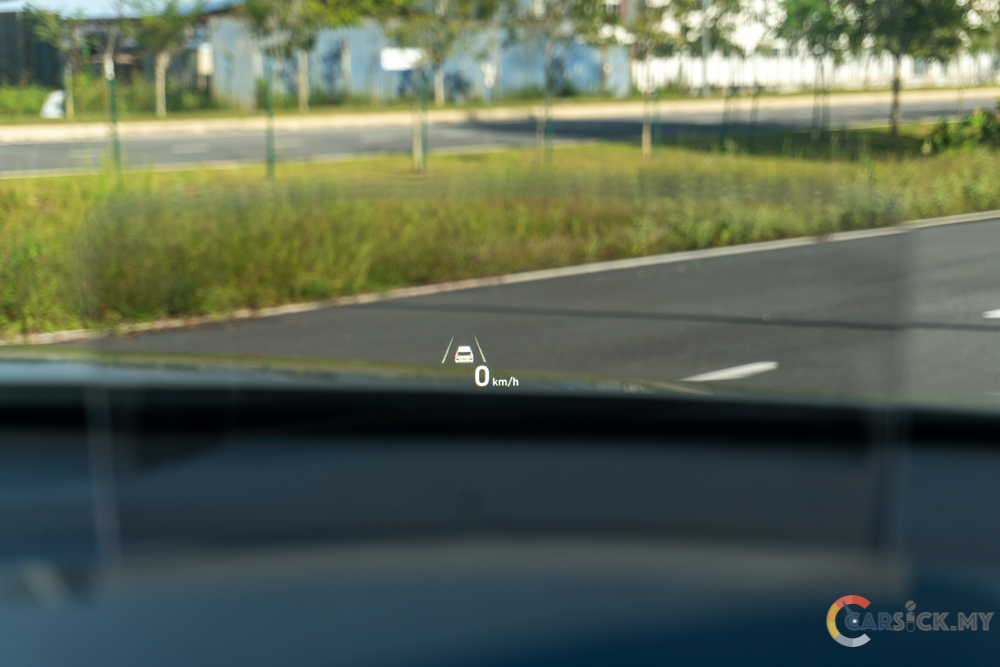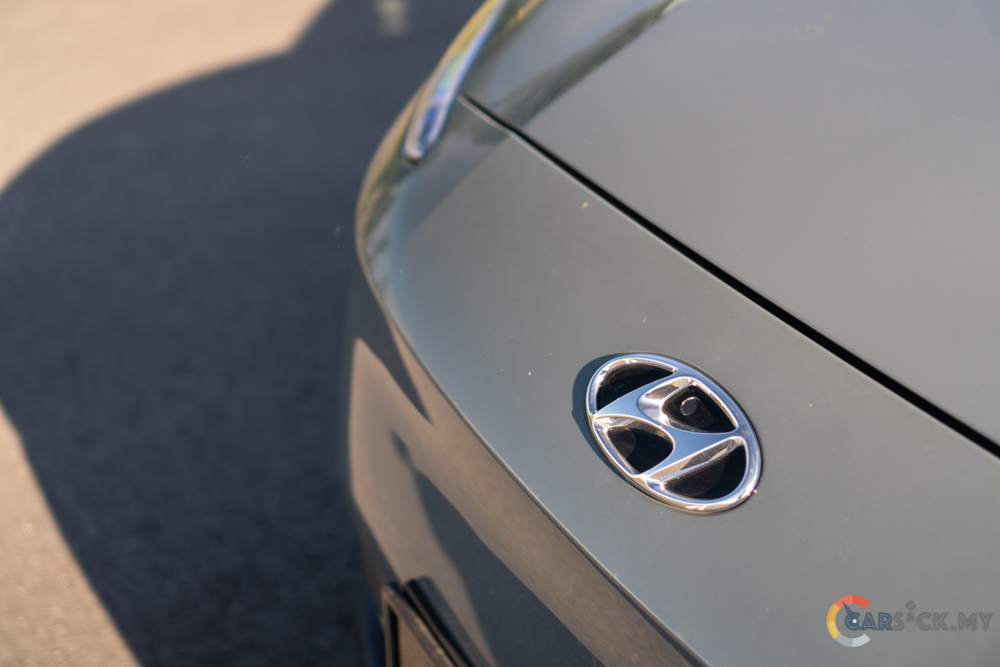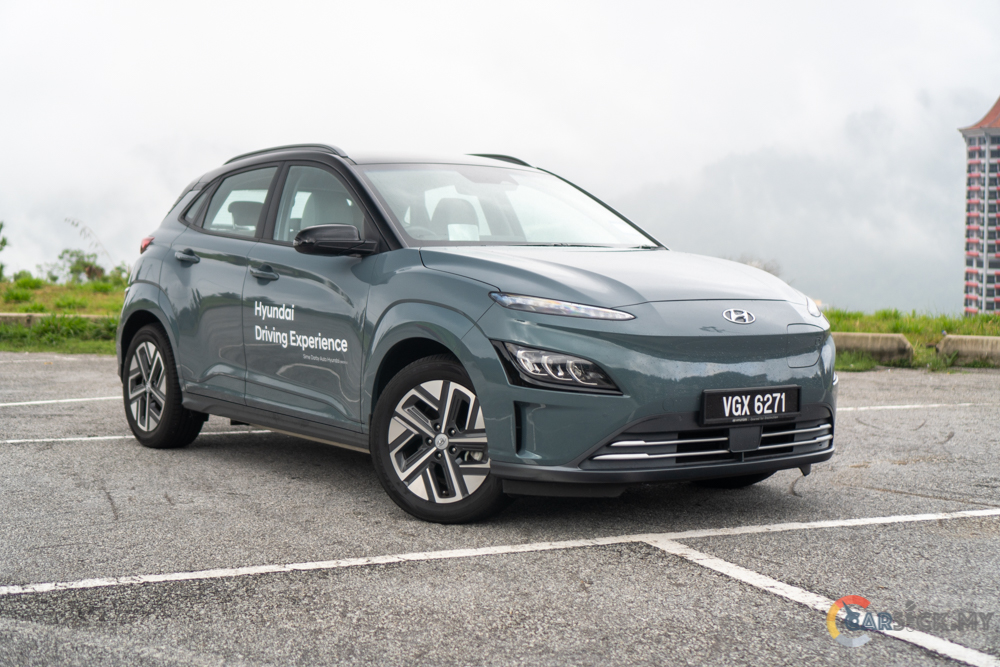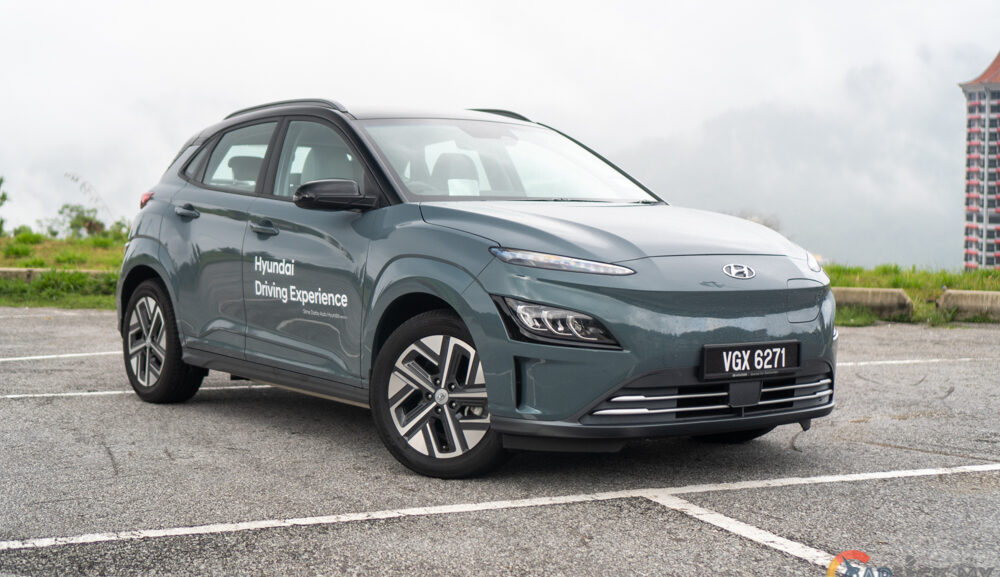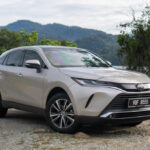Ever since the Malaysian government announced the tax incentives for Electric Vehicles (EV), the public interest for EVs has grown significantly. This also encourages automotive manufacturers to start introducing a wide variety of EVs in our local market. Under Hyundai, the first ever EV that Hyundai launched in Malaysia is the Kona Electric. This expands the Kona range into 7 different variants for the Malaysian market. This time round, I’ll be checking out the Hyundai Kona Electric, and see how well did Hyundai adapt an existing chassis into an EV.

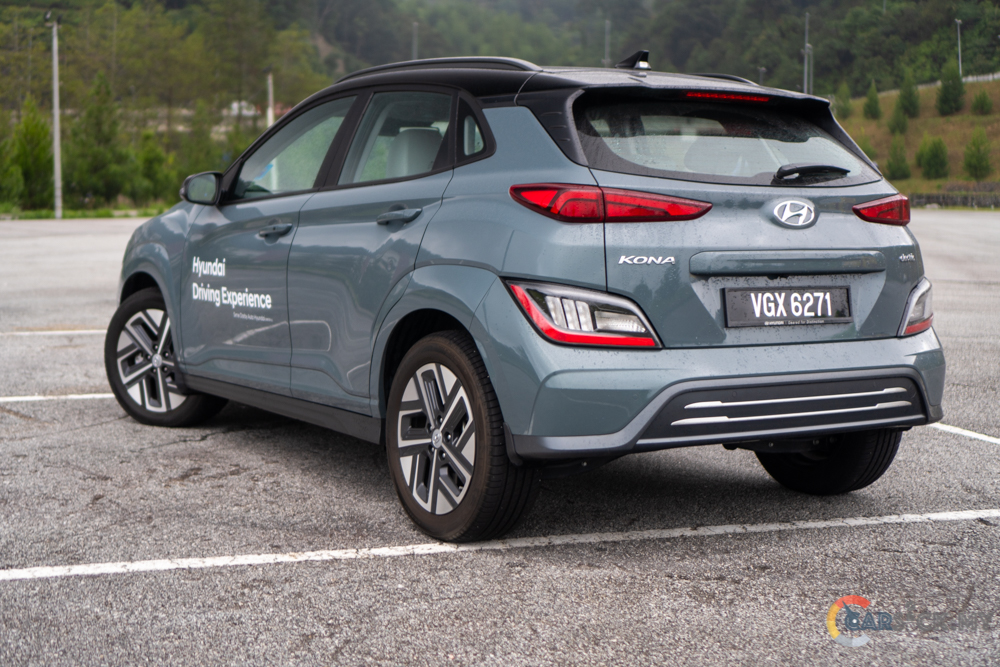 From the get go, the Hyundai Kona is already an interesting looking SUV, and the electric variant just adds on to its quirkiness. While the silhouette of the SUV remains the same, there are still some differences between the Kona Electric and the other Kona variants. Starting from the front, the Kona Electric comes with a fully covered up front bumper to provide better aerodynamic efficiency. With this covered up front bumper, it does create a space for Hyundai to put the charging port at the front. While I may not have an issue on where the charging port is located, standardizing it would definitely improve future usability.
From the get go, the Hyundai Kona is already an interesting looking SUV, and the electric variant just adds on to its quirkiness. While the silhouette of the SUV remains the same, there are still some differences between the Kona Electric and the other Kona variants. Starting from the front, the Kona Electric comes with a fully covered up front bumper to provide better aerodynamic efficiency. With this covered up front bumper, it does create a space for Hyundai to put the charging port at the front. While I may not have an issue on where the charging port is located, standardizing it would definitely improve future usability. 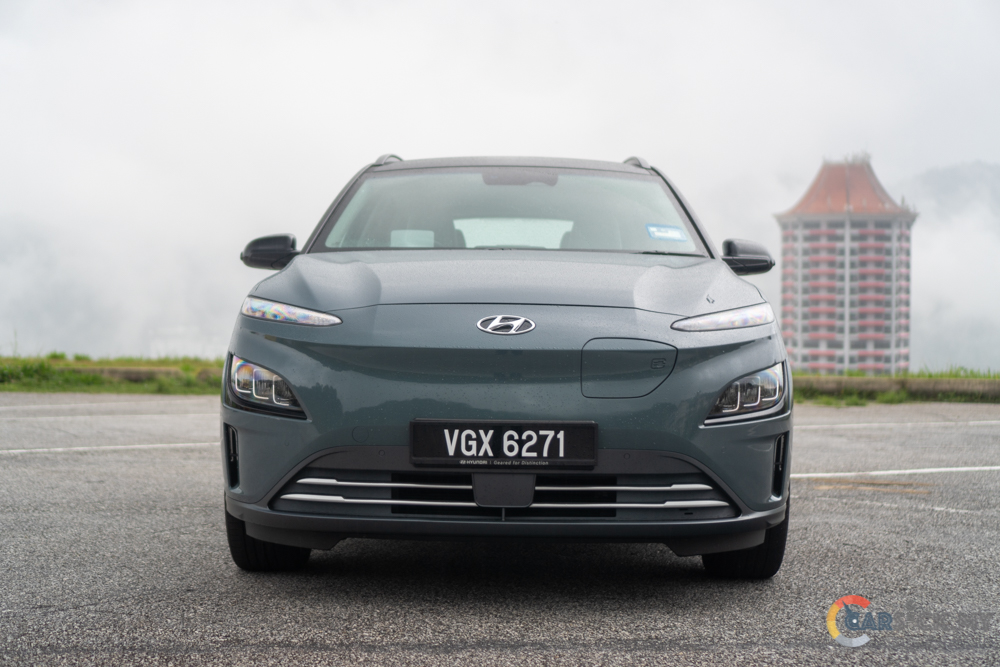
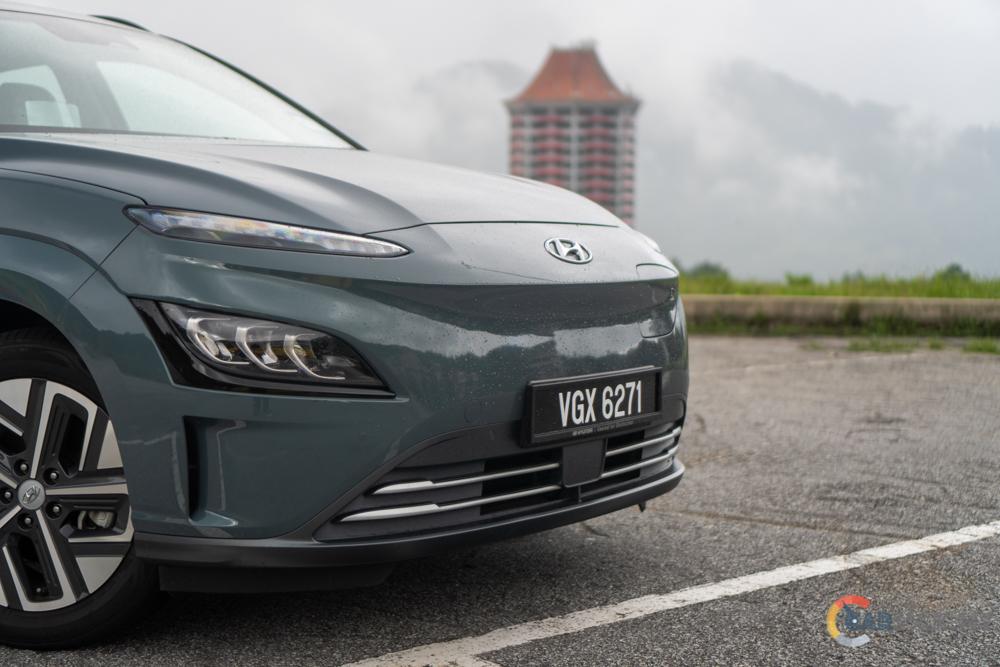
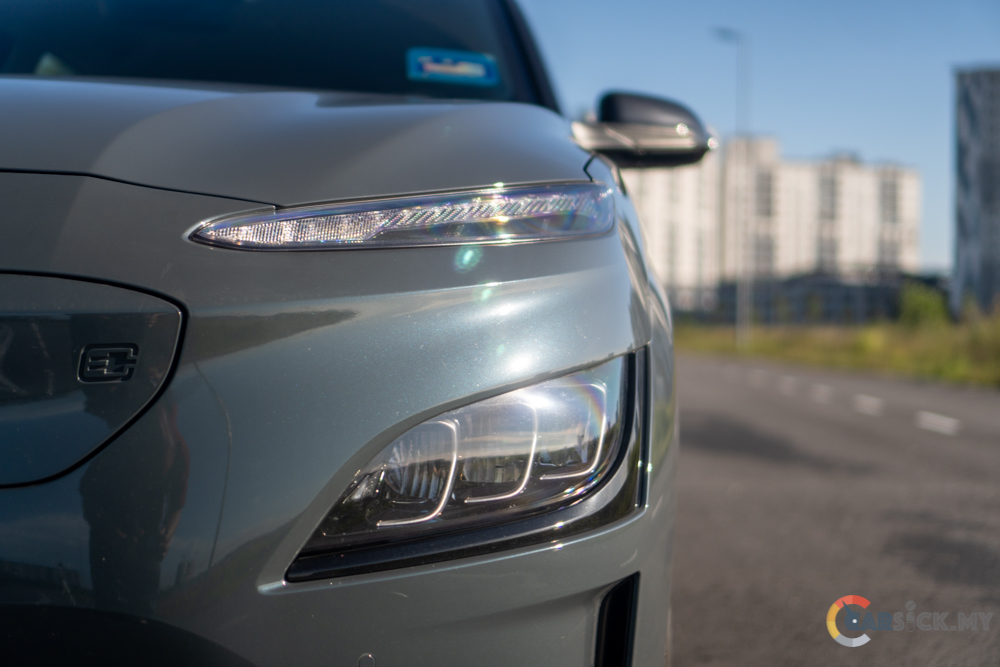
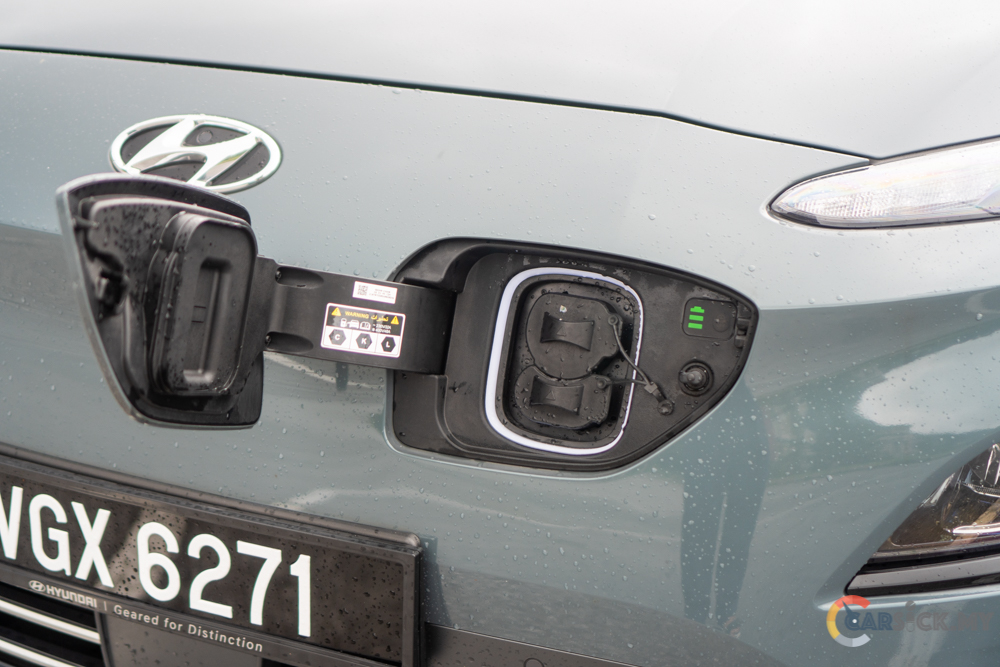
On the side, the easiest way to spot the differences is to look at the rims. For the Kona Electric, it comes with smaller 17-inch rims instead of the 18-inch rims found on the petrol variants. The smaller 17-inch rims are wrapped in 215/55 r17 eco tyres, which have lower rolling resistance. And for the rear, not much has changed on the back of the vehicle, apart from the Electric badging and the lack of exhaust. Overall, the exterior changes for the Kona Electric aren’t just cosmetic changes, as it serves a purpose to increase the battery range of the Kona Electric. 

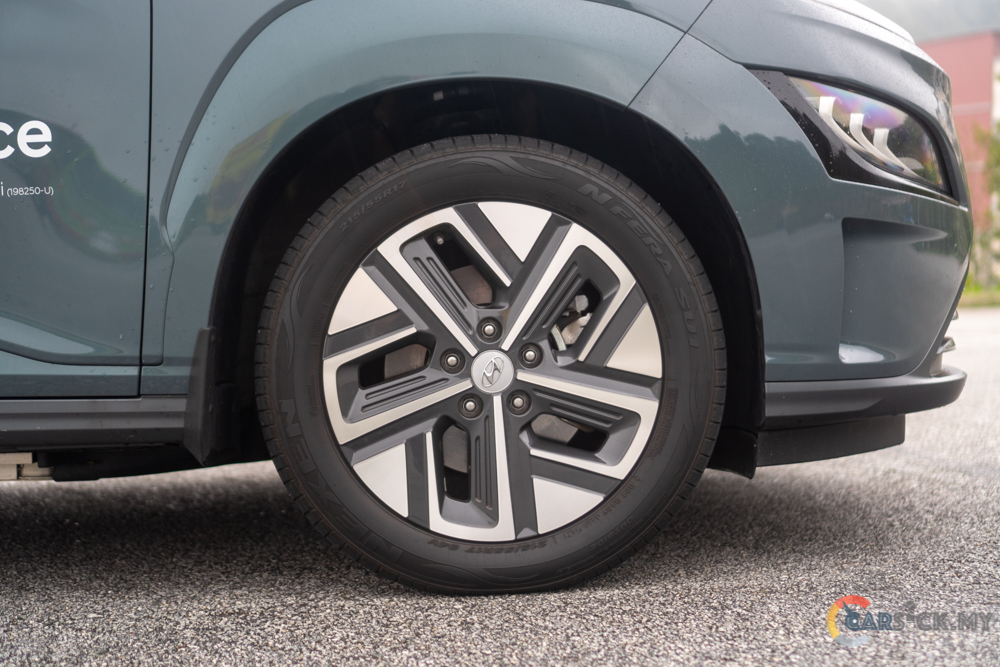
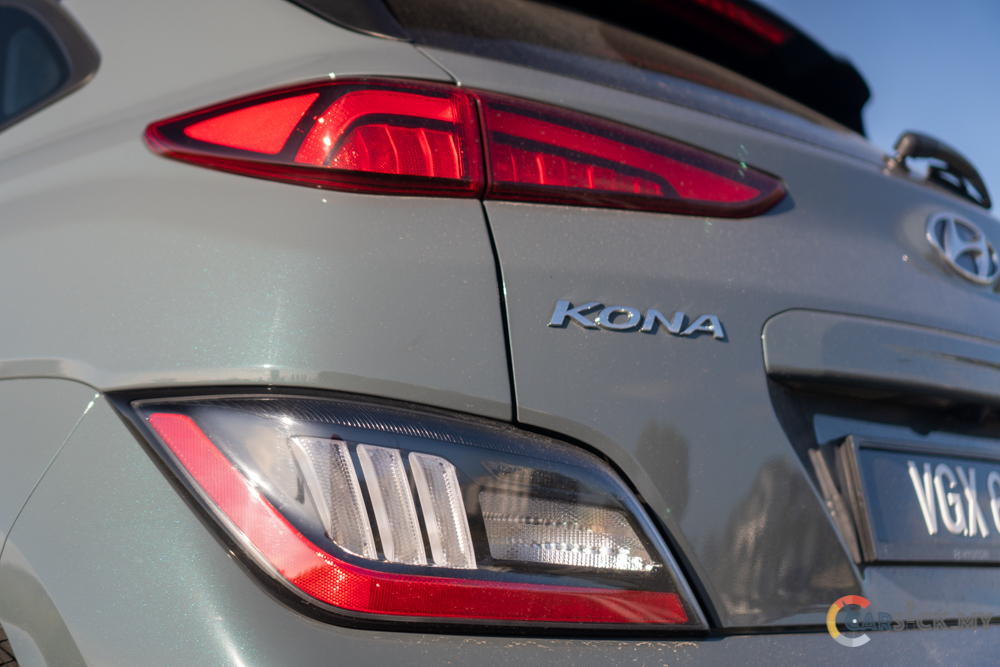
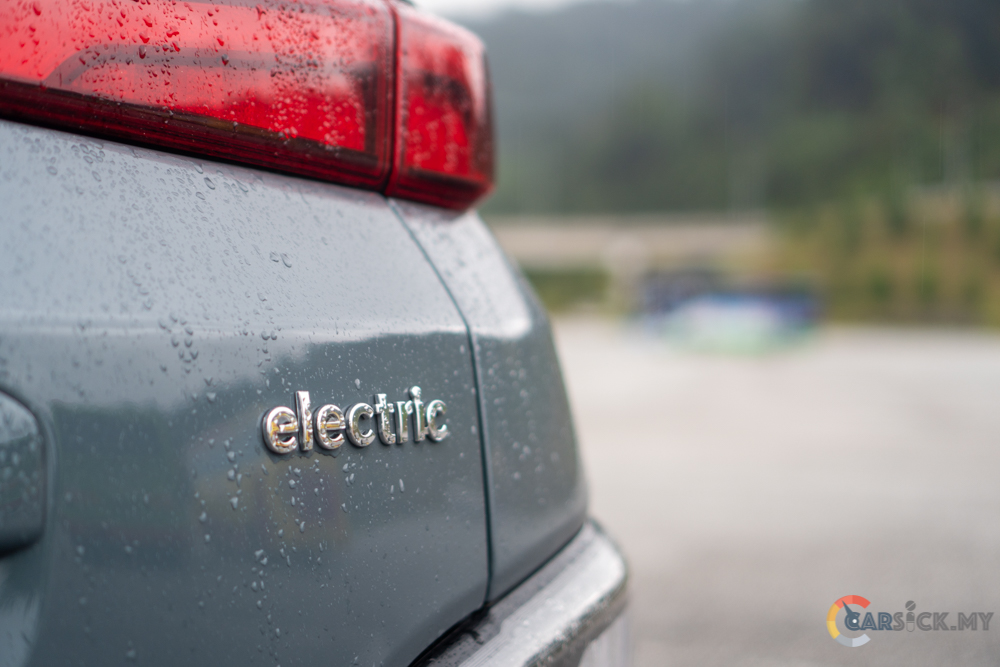
For the interior, Hyundai has done some changes on the inside of the Kona Electric. While the dashboard design remains untouched, the Kona Electric comes with a taller center console. Hyundai took advantage of the flat floor in the Kona electric, and split the tall center console into 2 different levels. On the upper level, this is where the electronic gear shifter, cup holder and some physical buttons are located. And for the bottom part, there’s where you’ll find the 12V socket, USB slot, and a decent sized storage compartment. 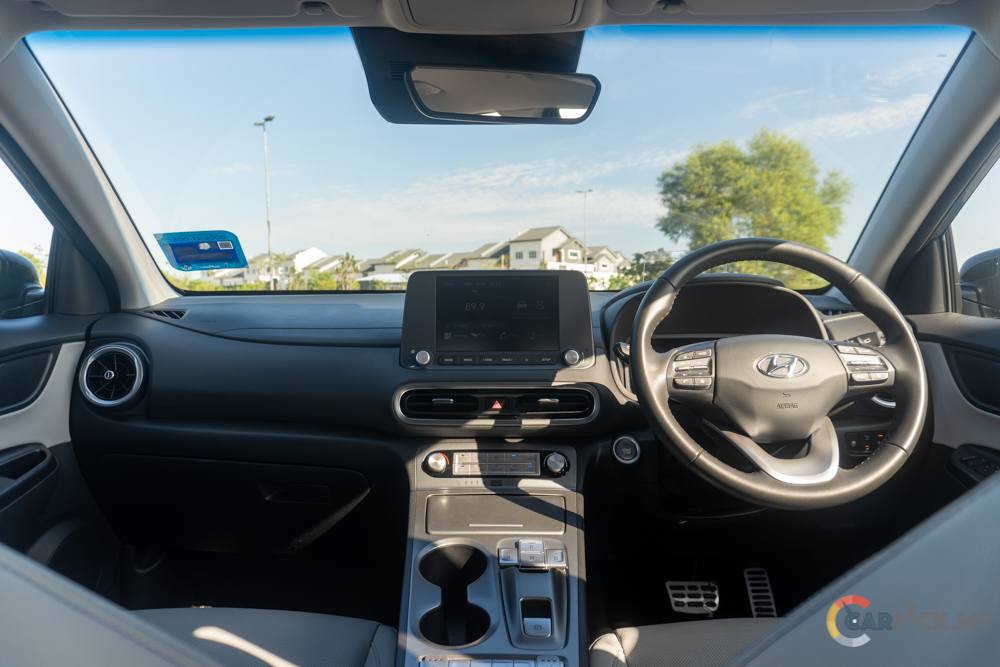
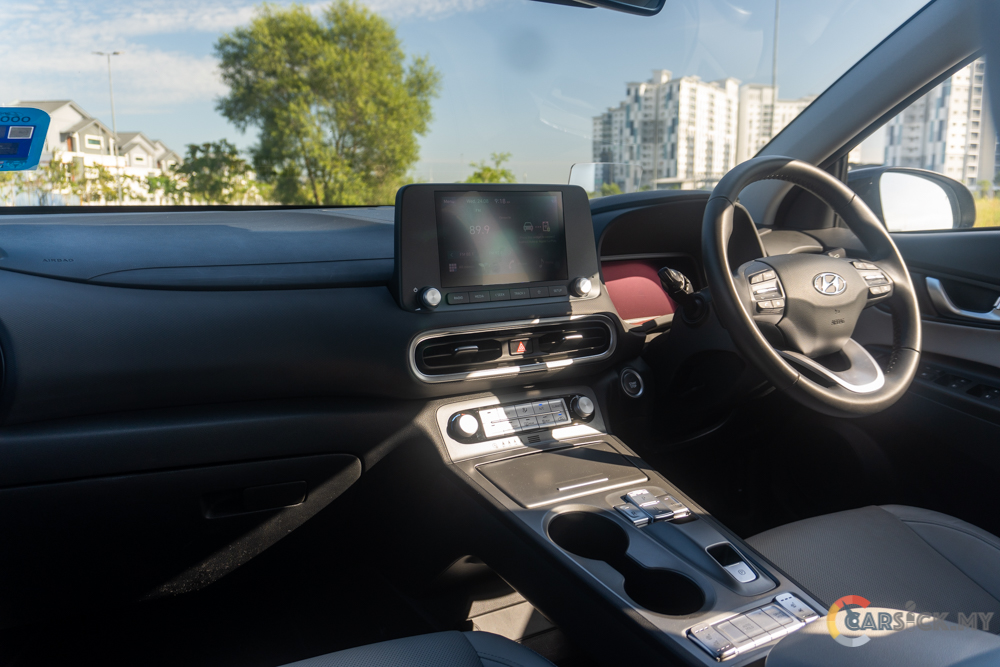

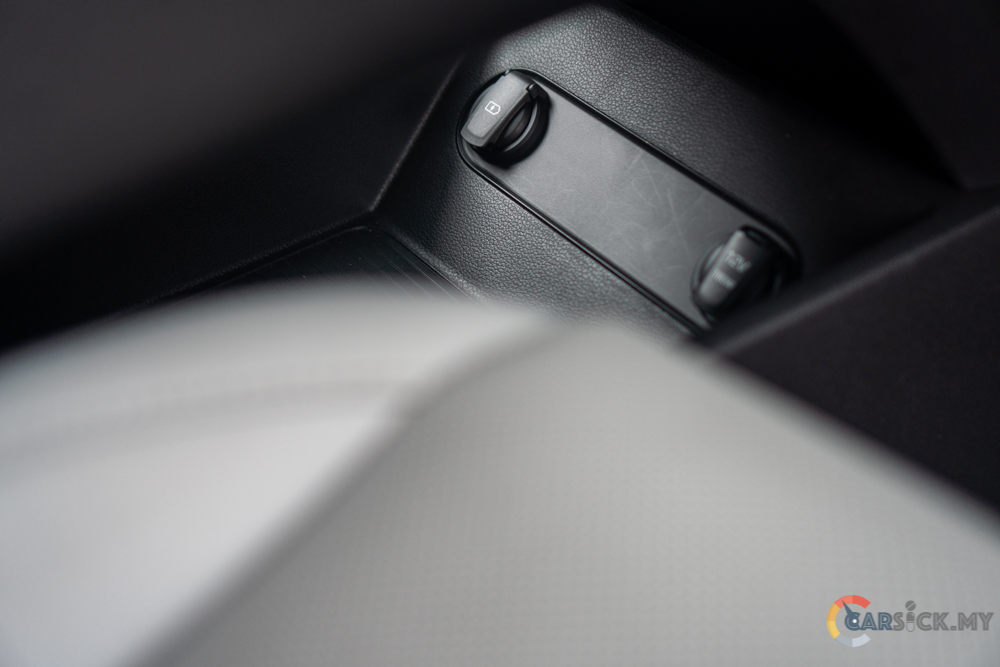
On the dashboard, the Kona Electric comes with the same 8-inch infotainment screen and 10.25-inch digital instrument cluster as the petrol variant. Within the infotainment screen, Hyundai has added an additional eco indicator to coach the driver to drive as efficiently as possible. As for the digital instrument cluster, the tachometer has been replaced with a battery usage and battery status gauge, while retaining a similar graphics. For those who are familiar with the Hyundai brand, the interior for the Kona Electric will not make you feel intimidated as it’s quite similar to any other Hyundai vehicles. 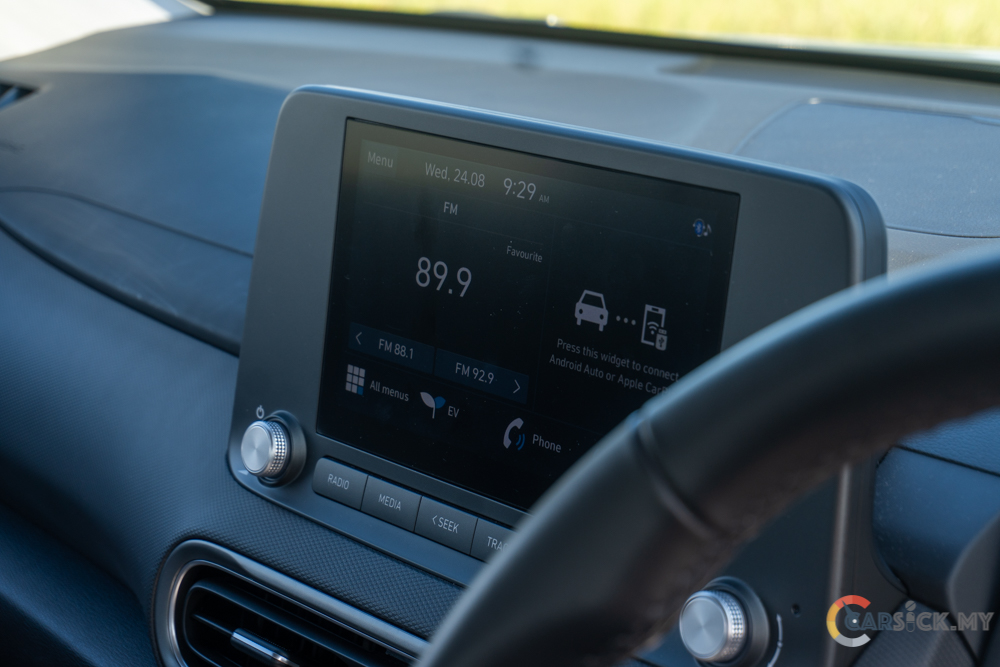
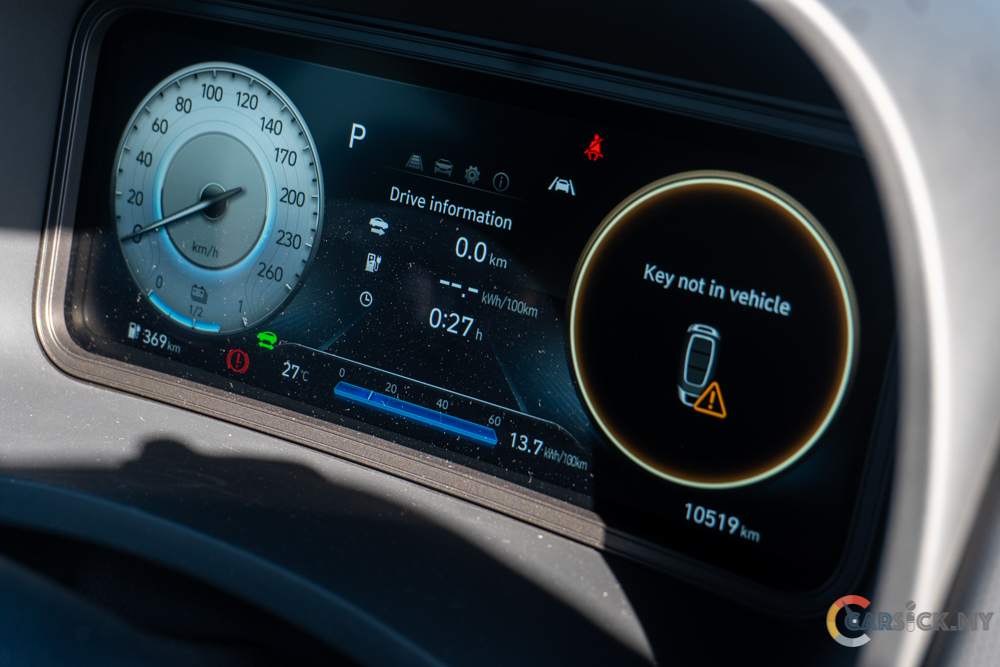
In terms of the seats, most people will struggle to notice the difference if they’ve never sat in a petrol powered Kona. While it may look similar, I noticed that the sitting position is somewhat out of place. How is that so, you might ask? Well, in order to accommodate the EV battery, the floor pan of the Kona Electric has been raised slightly. And in return, both front seats became taller even at its lowest position. On top of that, the maximum height of the steering wheel remains the same as the petrol powered Kona. With these compromises, it does make me feel like I’m seating on the vehicle rather than in it. 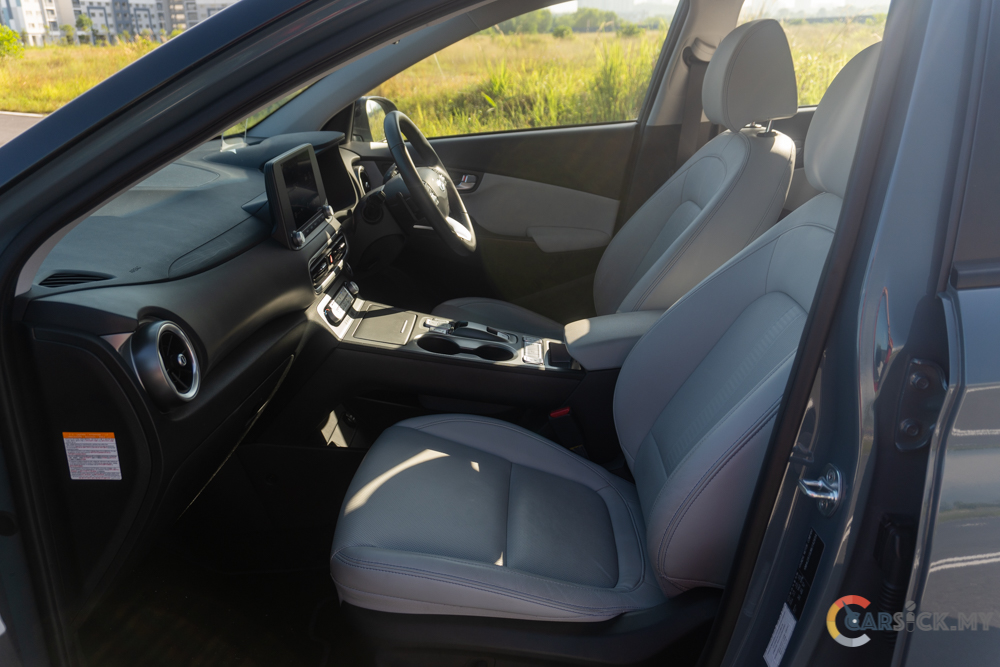
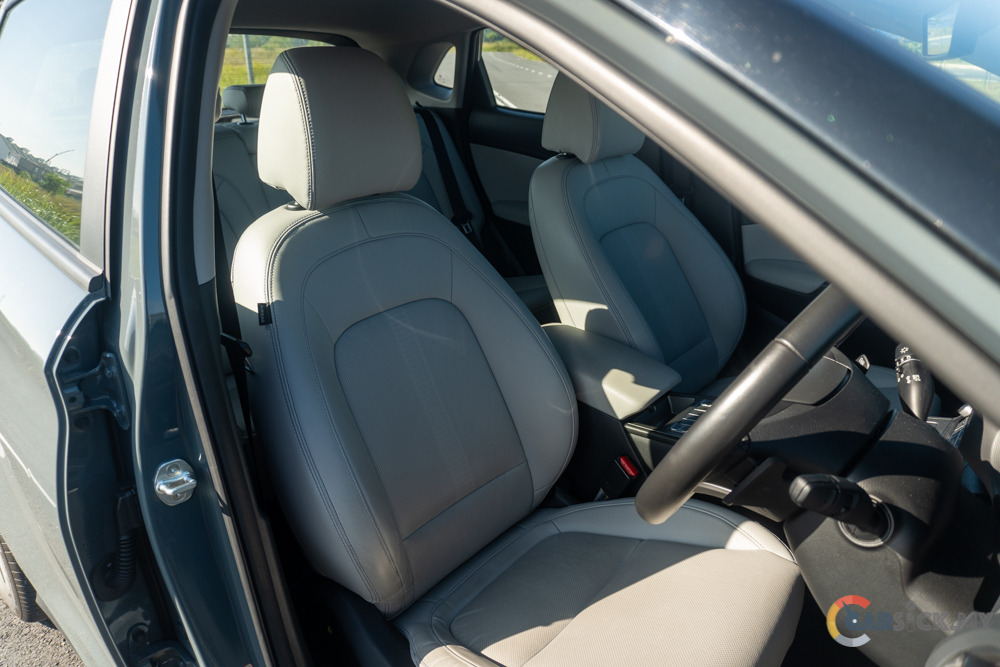
While the rear seats remained untouched, the seating position for rear passengers have also been affected by the raised floor pan. Rear passengers will feel like they’re seated in a squatting position, which can be somewhat uncomfortable for those with long legs. Based on specification, the Kona Electric boot space measured in at 332L, which is 29L smaller than the petrol powered Kona. But in real life, these changes are barely noticeable, and the boot space can be further expanded by folding down the rear seats. 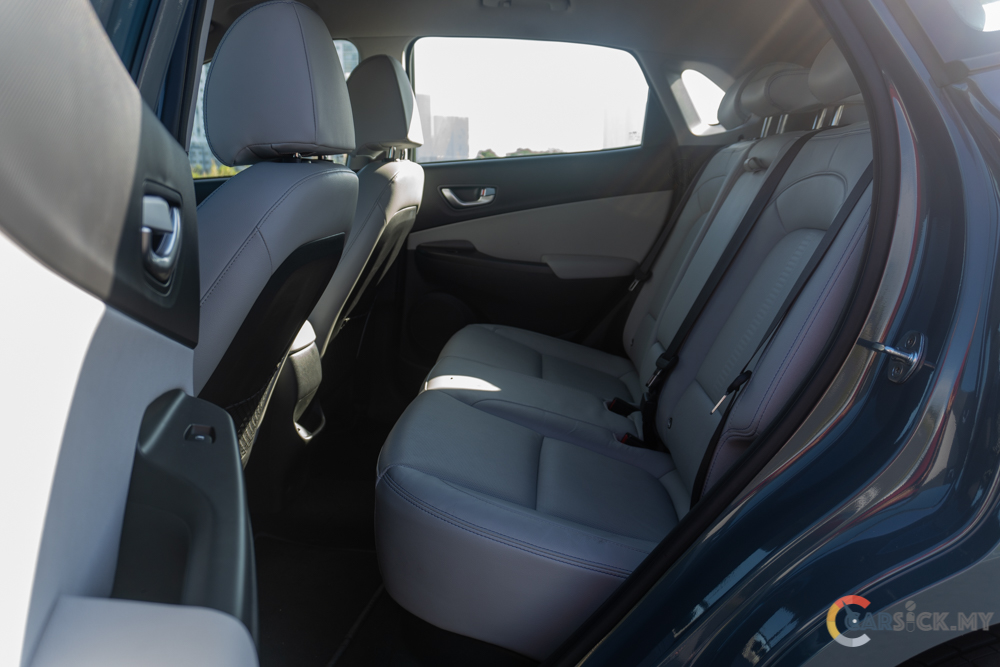
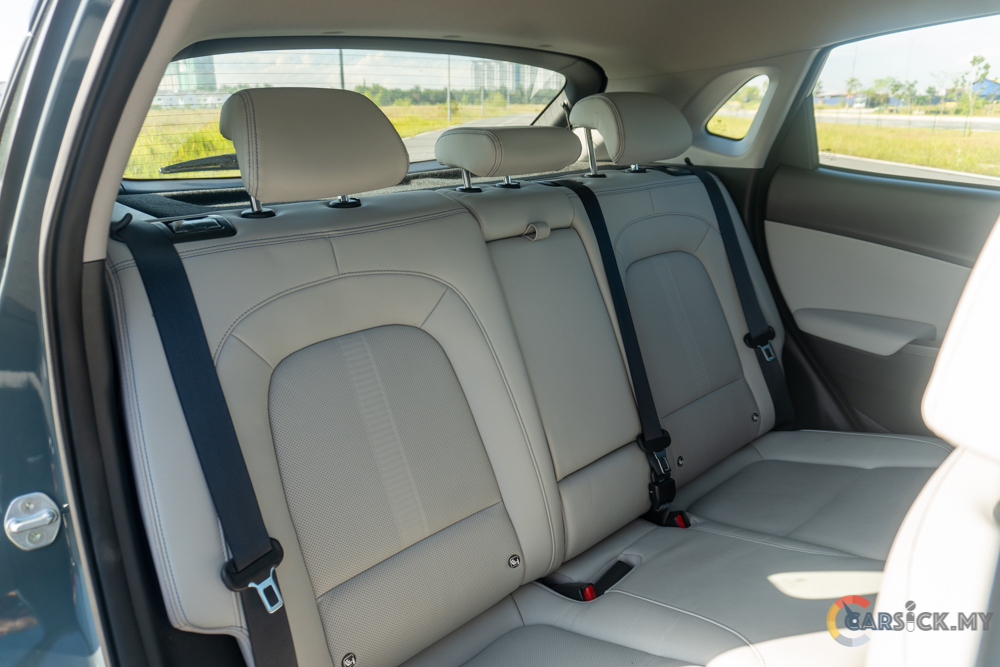

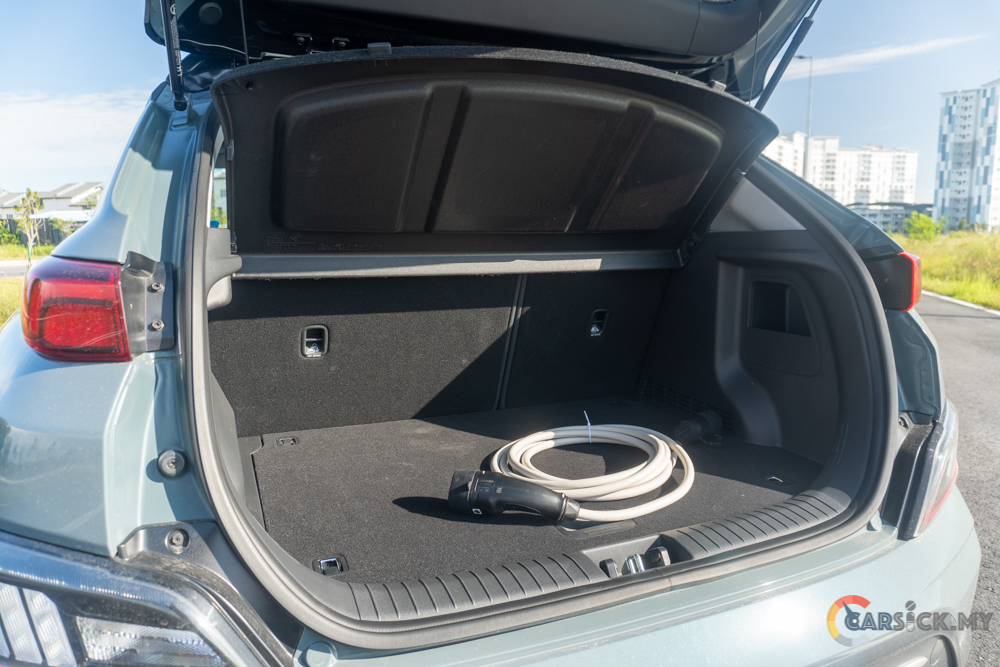
In Malaysia, the Kona Electric comes in 3 different variants. The variant that I have here is the Kona Electric E-Max. The Kona Electric E-Max is the top of the line variant, which comes with the longest range battery and the most powerful electric motor in its variants. The electric motor is located at the front, with the power being sent to the front wheels. The electric motor has the ability to produce 204PS, and a peak torque of 395Nm. The Kona Electric can accelerate from 0 – 100km/h in 7.9 seconds, and to a top speed of 167 km/h. The Kona Electric has a battery capacity of 64 kWh, with a maximum range of 484km based on the WLTP test. 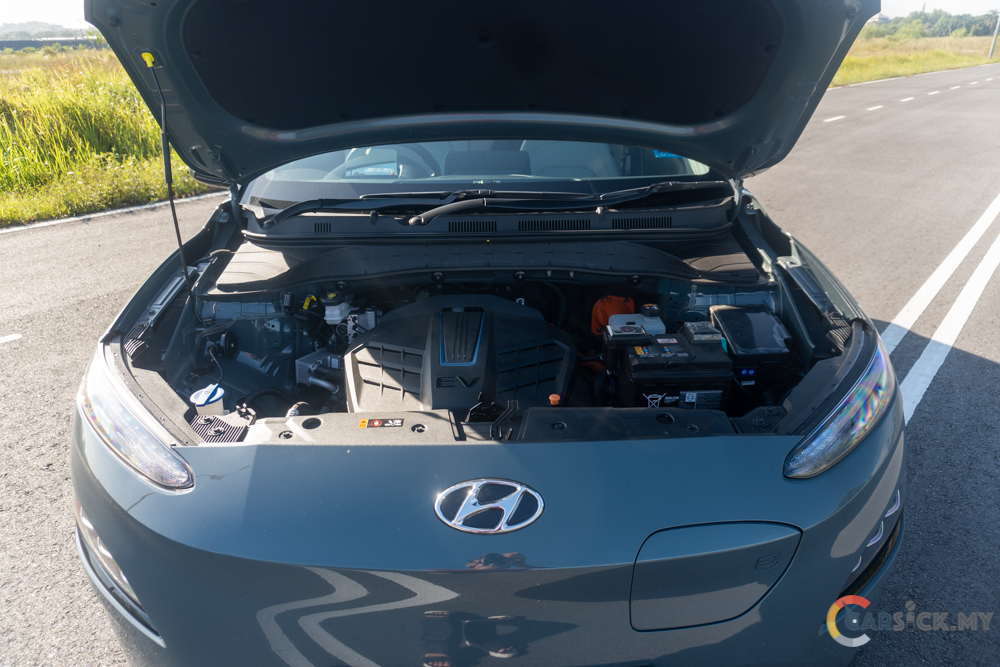
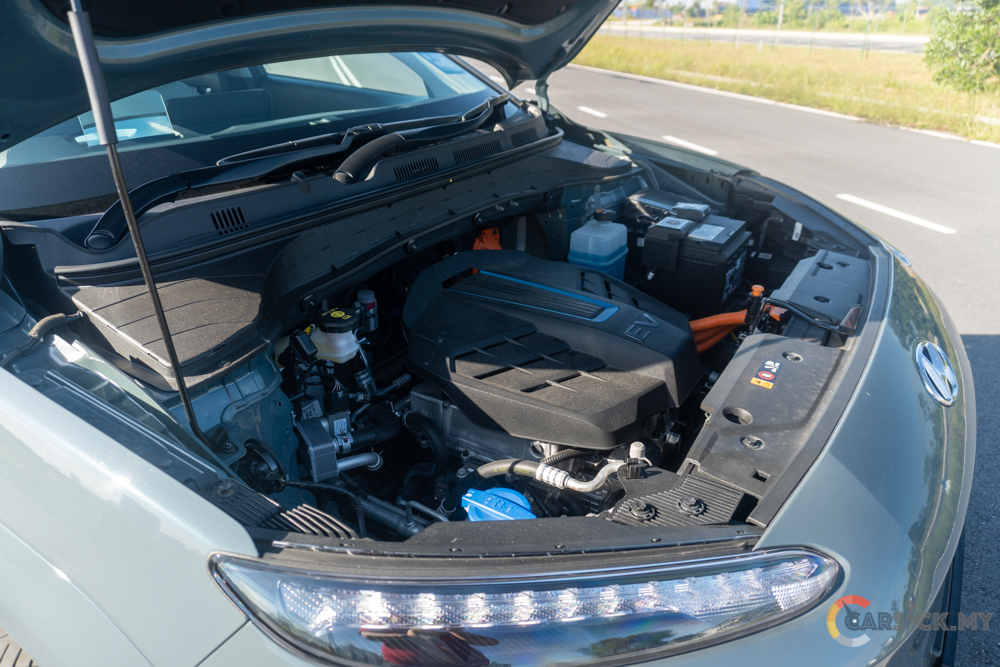
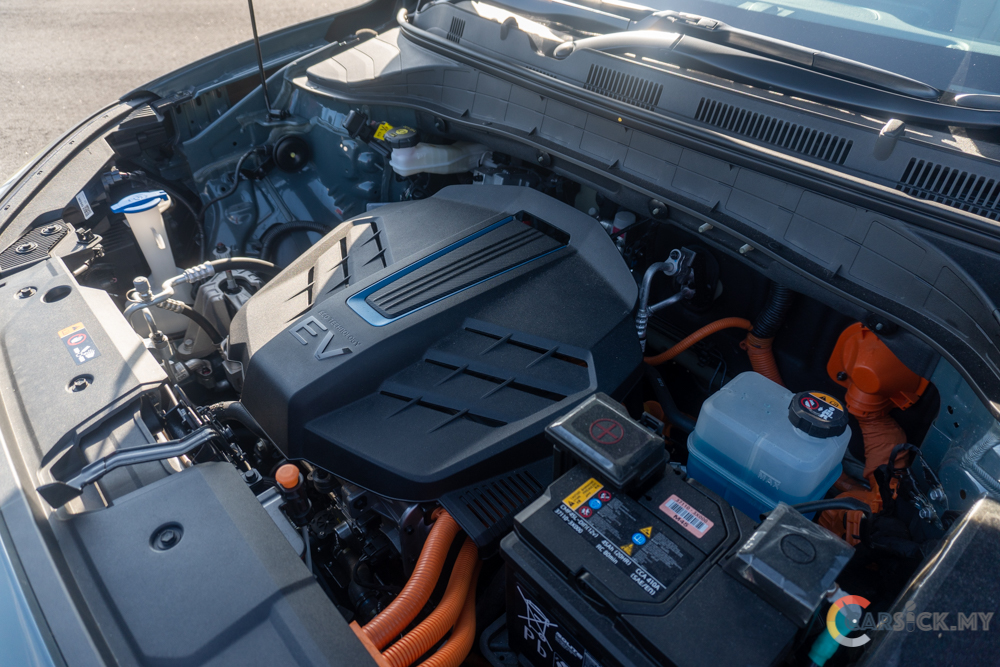
Under acceleration, the Kona Electric gets up to speed in a smooth and silent manner. The electric motor at the front does have decent amounts of power to keep up with the traffic, and can easily go past the national speed limit unintentionally. With the power being sent to the front wheels, I can feel the torque steer coming from the steering wheel. This is due to the instantaneous torque delivery from the electric motor, and also the lack of weight over the front wheels. This can actually catch the driver off guard, if they step on the throttle without holding on to the steering wheel tightly.
According to Hyundai, the Kona Electric E-Max has a maximum range of 484km on a full charge. This is quite a usable range for Malaysians, as the 484km range is close to a full tank of fuel on a regular city car. In my real world testing, I usually recharge the battery up to 80%, as after 80%, the charging speed will start slowing down. At 80%, I do get about 420km of range that is rather impressive. With this range, I have no problem going up to Genting and back.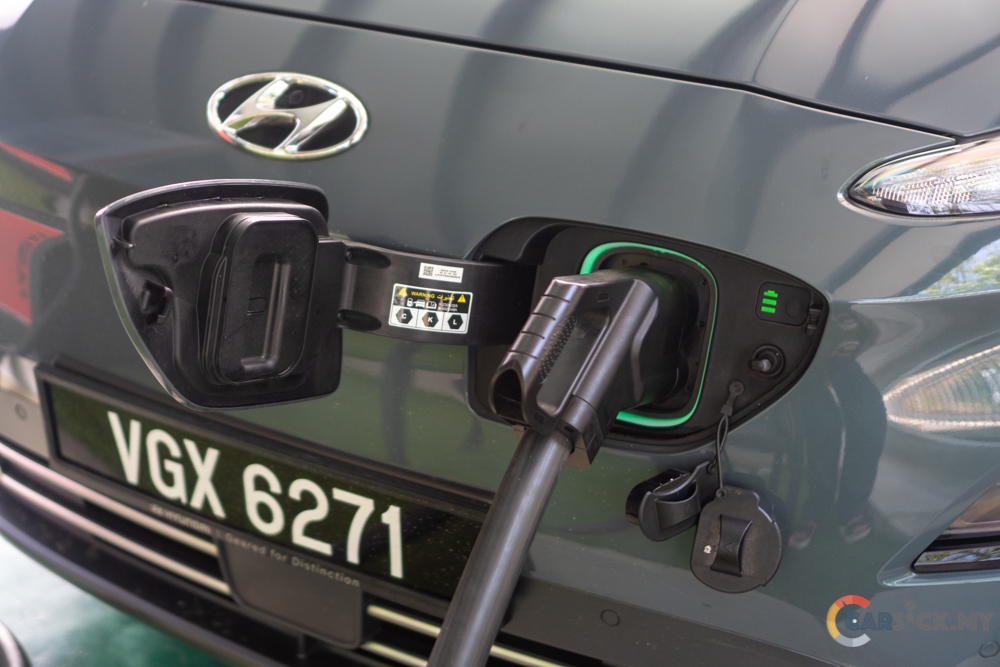
During my time with the Kona Electric, I had to drive the vehicle on a wet mountain road. Without the weight over the front axle, I noticed that the steering wheel feels lighter on the Kona Electric. While the Kona Electric’s steering feels rather precise, I do lose out on some confidence when driving on twisty roads. The eco tyres and the additional weight of the vehicle also made me take extra precautions while driving. Then again, the Kona Electric is actually a very stable crossover, because most of the weight is located at the bottom of the vehicle. With the additional weight, Hyundai has beefed up the suspension on the Kona Electric to cope with it.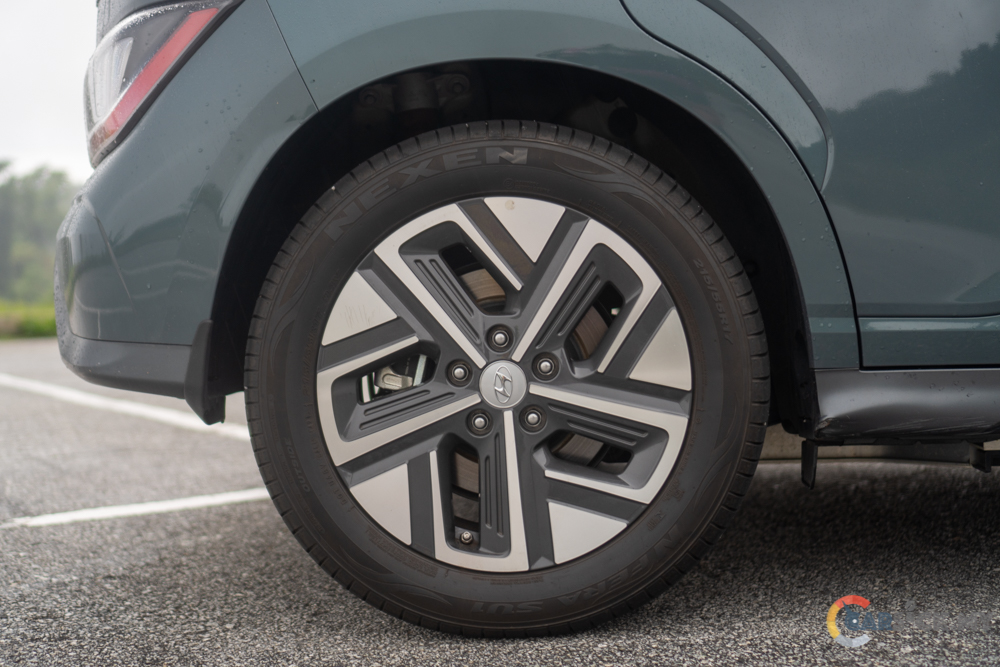
In order to slow the Kona Electric down, the regenerative brake and the physical brakes work together in bringing the vehicle to a halt. While the braking performance is strong, the regenerative brakes aren’t as powerful as I was expecting it to be. In fact, I hate to admit this, I kind of miss having one pedal driving on an EV, as the Kona Electric did not have this function. Just like the Kona N-Line, the Kona Electric comes with a long list of safety and driver assistance systems. 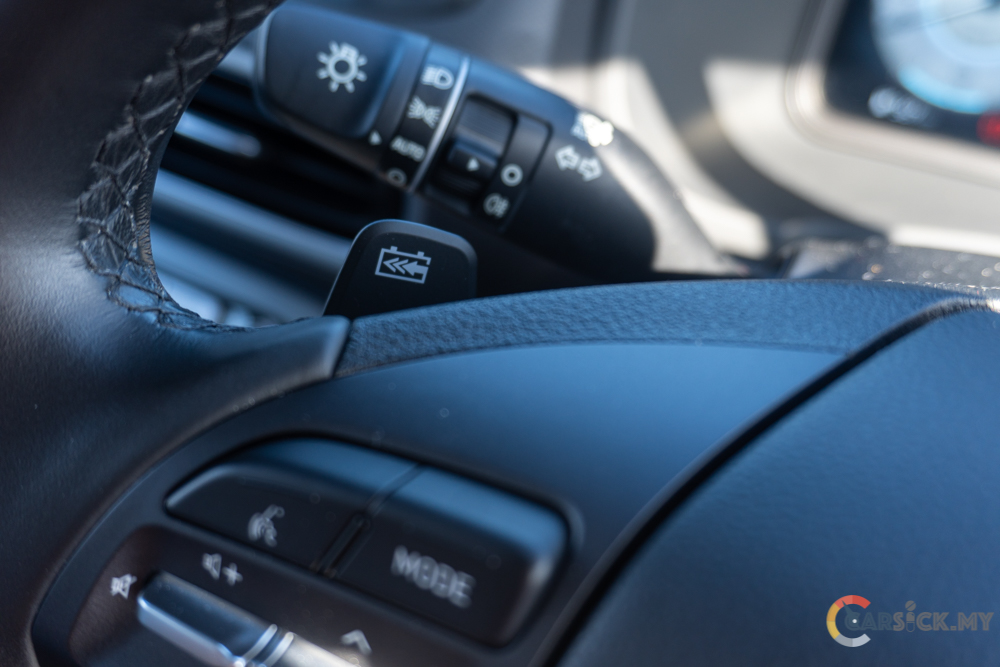
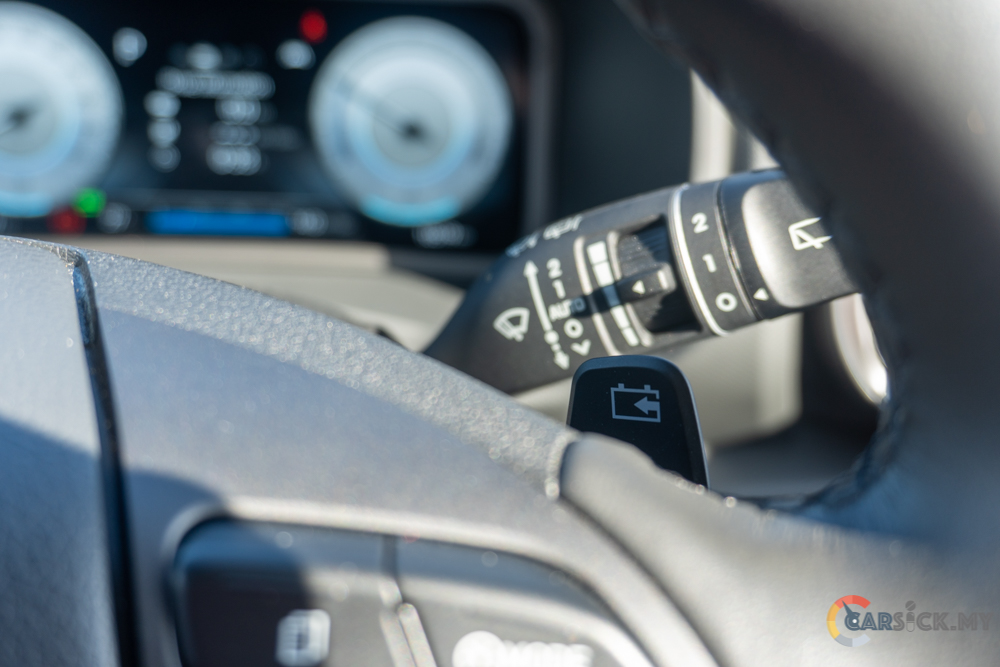
The Hyundai Kona Electric comes with 6 airbags, Anti-lock Braking System (ABS), Electronic Stability Control (ESC), Vehicle Stability Management (VSM), Brake Assist System (BAS), Traction Control System (TCS), and Hill-Start Assist Control (HAC). As for the driver assistance systems, the Kona Electric comes with Blind-spot Collision-Avoidance Assist (BCA), Rear Cross Traffic Collision-Avoidance Assist (RCCA), Lane Keeping Assist (LKA), Lane Following Assist (LFA), Leading Vehicle Departure Alert (LVDA), Smart Cruise Control with Stop & Go (SCC w S/G), Forward Collision-Avoidance Assist (FCA), High Beam Assist (HBA), Driver Attention Warning (DAW), Rear Occupant Alert (ROA), and Safe Exit Alert (SEA).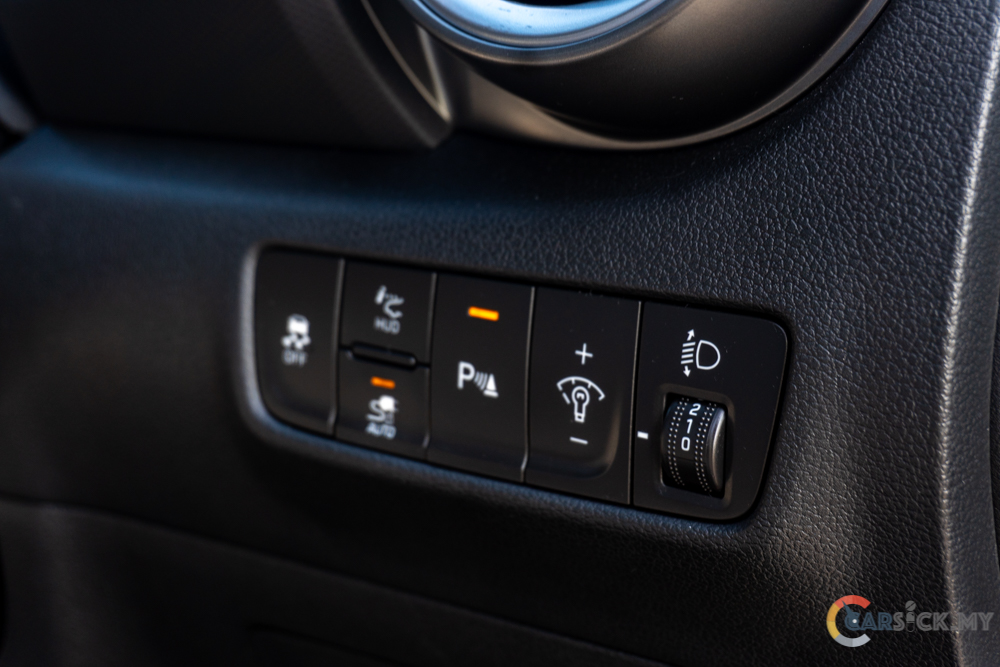
With a price tag of RM 208,348.00, the Kona Electric is a good EV for those who want to start their EV ownership experience. While the Kona Electric is adapted from a regular chassis, the technology inside it is on par with those found on purpose built EVs. Paired with that impressive 484km range, the Kona Electric is as good as any purpose built EVs on the market.
Check full photo album here.
